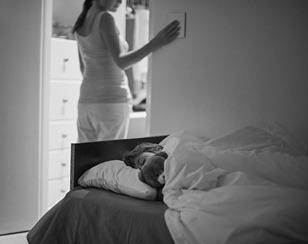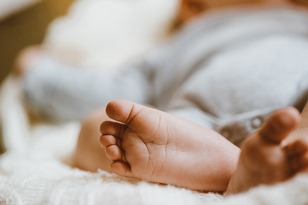What Happens When A Child Is Overtired?
Daylight Savings – Spring
Daylight Savings can be a dreaded time for parents of young children, but it doesn’t have to be. While it’s true that kids do not adjust immediately to the time change, Spring Forward can happen smoothly if you take some time to plan ahead.

Little ones tend to have more structured bedtimes, causing them to wake up around the same time each morning. Regular sleep patterns are actually best for good sleep, but the one caveat is that transitions take a little time.
The first thing I always advise parents to do when changing the time is to leave things alone on Saturday night. Wait until Sunday morning after breakfast to actually change the clocks in the house. Psychologically, it will feel much better for everyone to stay on schedule until then.
Helping Babies and Children Adjust to Daylight Savings
Infants
For younger infants who do not yet have a predictable bedtime, simply jump to the new time Sunday night. If your baby’s bedtime has become predictable (which usually happens after six months old), move bedtime 15 minutes earlier each  night until you reach normal time.
night until you reach normal time.
A baby whose bedtime is 7:00 pm should go down at:
• Sunday: 7:45 pm
• Monday: 7:30 pm
• Tuesday: 7:15 pm
• Wednesday: 7:00 pm.
Toddlers
For toddlers, push nap time and bedtime back 30 minutes for three nights after the time change. On the fourth day, push both times back another 30 minutes and you’ll be back on schedule.
A toddler who naps at 12:30 pm and goes to bed at 7:00 pm should switch like this:
• Sunday: nap at 1:00 pm, bedtime at 7:30 pm
• Monday: nap at 1:00 pm, bedtime at 7:30 pm
• Tuesday: nap at 1:00 pm, bedtime at 7:30 pm
• Wednesday: nap at 12:30 pm, bedtime at 7:00 pm
Children
With children who have stopped napping, split the difference between the old  time and the new time.
time and the new time.
Here’s how you adjust to daylight savings if your child normally goes to bed at 7:00 pm:
• Sunday: 7:30 pm
• Monday: 7:30 pm
• Tuesday: 7:30 pm
• Wednesday: 7:00 pm.
If your child has a different bedtime than 7:00 pm, follow the same pattern of putting him to bed 30 minutes later than the regular time for three days and then going back to the regular time on Wednesday.
Don’t Forget to Block Out the Sunlight
As the days get longer, your child may wake early with the sunrise and struggle to fall asleep while it is still light out. Even though there are extra hours of sunlight this time of year, children still need the same amount of sleep. Darkening the room with blackout blinds can be very helpful.
Transitions Can Take Time, but They Will Happen
After Daylight Savings begins, it may take babies and children a bit more time to fall asleep at night. This is normal because they are simply not as tired when the time first shifts. Usually, the full transition takes about a week. For some children, it can take up to a month. But with patience and consistency, it will happen!


